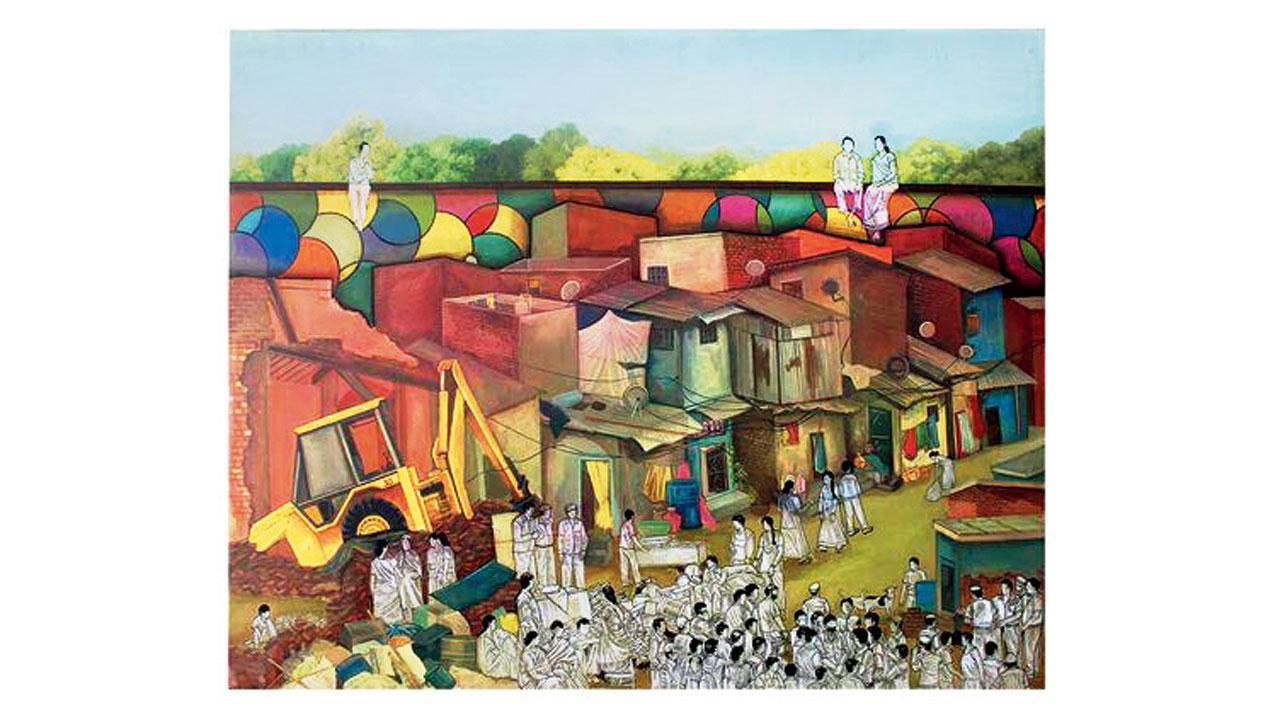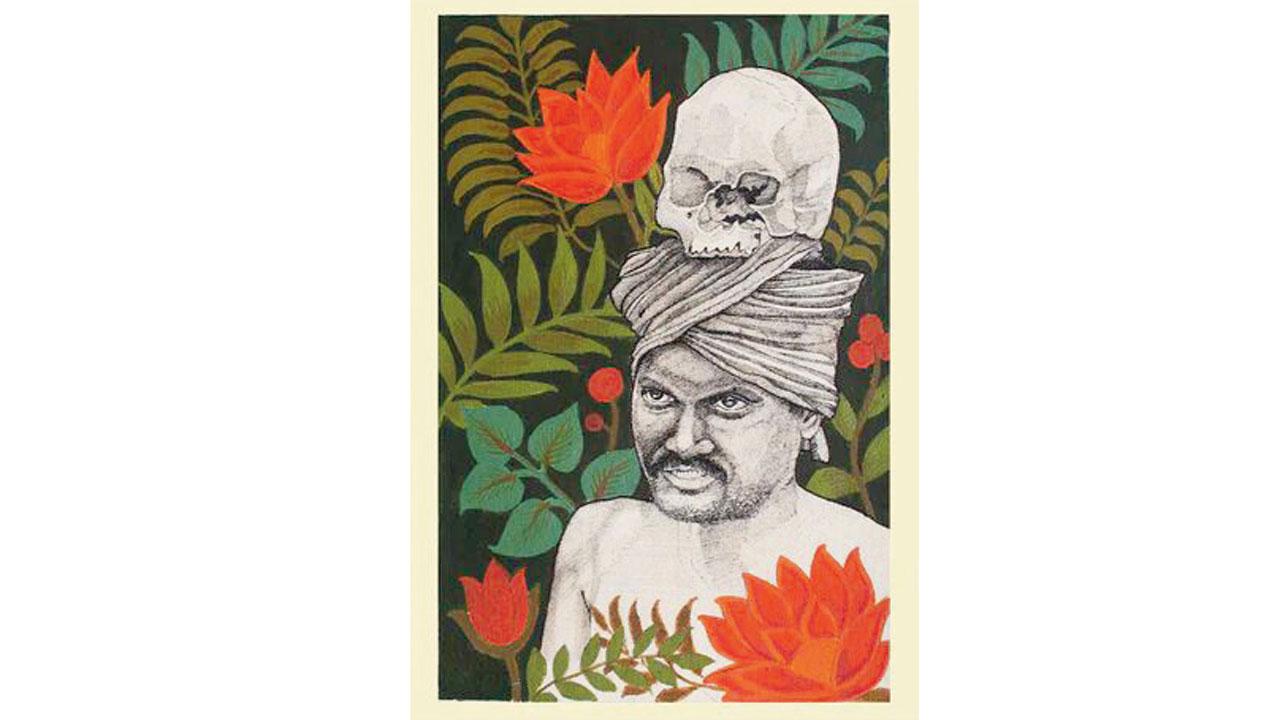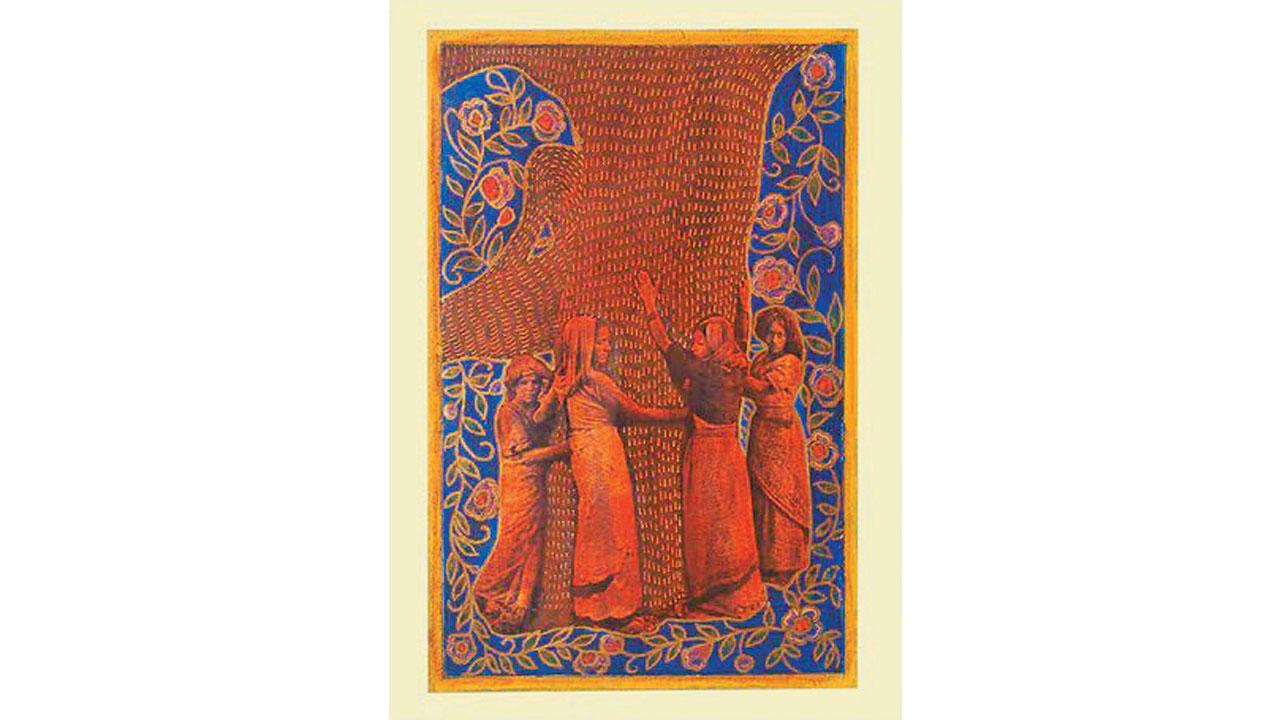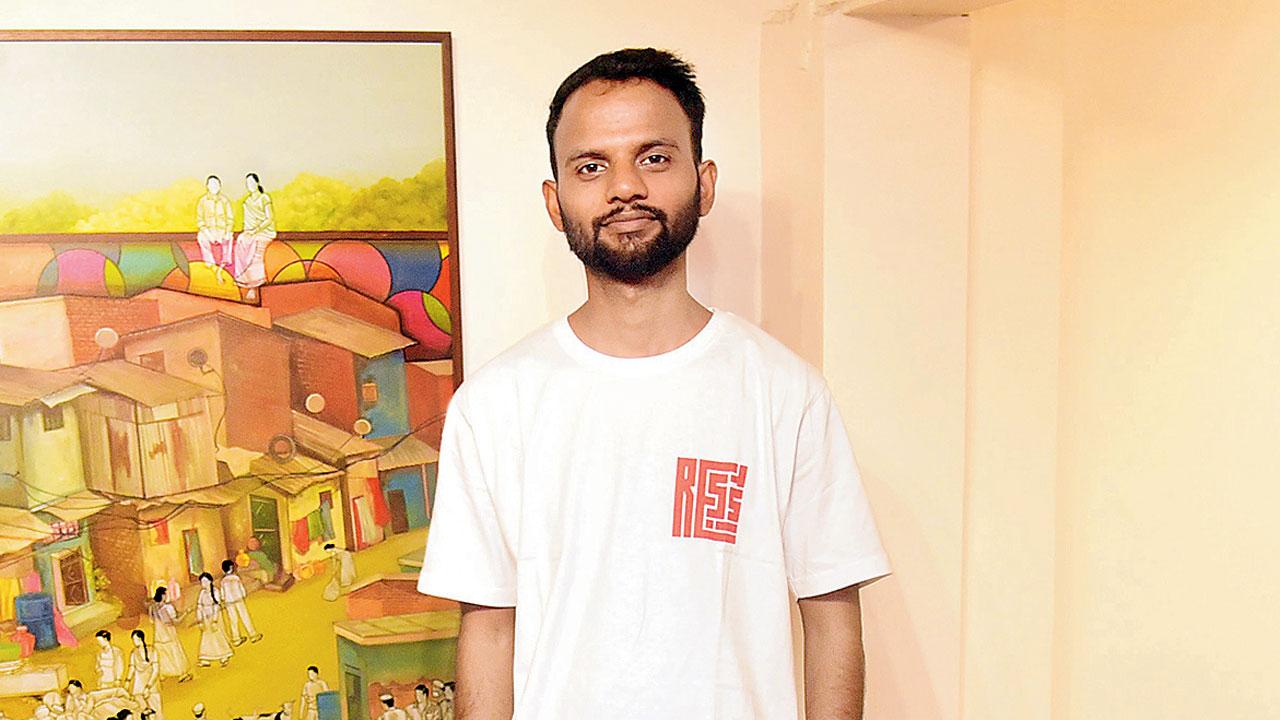Intiyaz’s artworks, on view at Method Kala Ghoda, are rooted in protests that have changed history

(from left) Baad Me Aana, This Wall is A Masterpiece, Tamil Nadu Farmer’s Protests, and the Chipko Movement. Intiyaz’s works are based on protests for basic needs in the neighbourhoods he grew up in
A basic staple of approaching a government department with any sort of request is to hear the words, ‘Baad mein aana (come later).’ These can be said rudely or sugarcoated with a promise of prompt action but just not today, but no matter how they are said, they convey a deep sense of dejection couple with hope - if they have called you again, they might be willing to help you after all.
ADVERTISEMENT
“In reality,” says artist Mohd Intiyaz, “It’s just a false hope.” And yet, these are the very words he chose as the name of his exhibition of paintings, currently underway in Mumbai. The lower section of the gallery is devoted to 30 paintings depicting protests spanning various periods of history, while the upper section comprises 11 large-scale pieces, each of which captures a moment in time that has left a deep impression on the artist’s memory—in particular, the fights for access to water in the neighbourhood he grew up in.

The 28-year-old artist was born in Jharkhand, but migrated with his family to Delhi at the age of four. This migration, he explains, marked an epoch in his life, because it was his mother’s assertiveness that finally forced his father to make the move to a lesser conflicted area in Delhi. “Her determination to move to Delhi, even in the face of my father’s opposition, was itself a form of protest and activism for me. She was advocating for the rights of us, her children—our rights to education and safety.”

Intiyaz, who studied art at Jamia Millia Islamia university in Delhi, was always intrigued by protests and activism taken up for various political and social causes. “Protests don’t have to be always loud, or violent. They just need to be affirmative,” he says. “The first painting in this series was inspired by the 2017 Tamil Nadu farmer’s protests, which were very performative in nature.”
The painting in question shows the profile of a farmer drawn in black ink against a navy-blue background of orange flowers and leaves. The farmer has a skull balanced on the top of his turban; the farmers had reportedly used skulls and bones of farmers who’d committed suicide as a demonstration.

The curation of paintings displayed at Method Kala Ghoda are a project of the pandemic era, when Intiyaz began painting on fabrics sourced from the Seelampur fabric market in North-east Delhi, one of the largest fabric markets in Asia. A sudden boredom and lack of interest in working with paper spurred him to use fabric as a canvas instead, which is cheaper than paper in the wholesale market. His mother, who herself painted on leftover pieces of takiya, rumaal, and chaddar, inspired him to take up the same form of painting. “She’d collected all these fabric paintings, and I’d trace out the same designs in my copy,” he recalls.
Intiyaz chooses a particular protest, then researches it extensively, and picks out an element he thinks represents it best; such as the four women drawn in bright orange and red tones and huddled around the trunk of a tree, a reference to the Chipko movement. Or, the colourful gathering of people that draws the eye when one looks at the titular work in the series, from which the name of the exhibition is drawn.

“When we moved to Delhi, I was surprised to see the attitude towards water,” he recalls. “There is a feeling that bad things are in their kismet, that they deserve it.” He explains why he drew the people waving letters in the air in the painting, demanding that the water department give them their daily quota of water. The department officials wave them off, saying baad mein aana…and they get stuck in a cycle, where the lack of water is the only thing they can think about.
“I see the people around me taking a stance, asking for their rights…they’re asking for answers with their own voice. They don’t know what they’re doing is a form of activism; they’re just asking for their basic needs,” he concludes.
WHAT: Baad Me Aana by Mohd Intiyaz
WHEN: August 10 to September 10
WHERE: Method Kala Ghoda
 Subscribe today by clicking the link and stay updated with the latest news!" Click here!
Subscribe today by clicking the link and stay updated with the latest news!" Click here!







